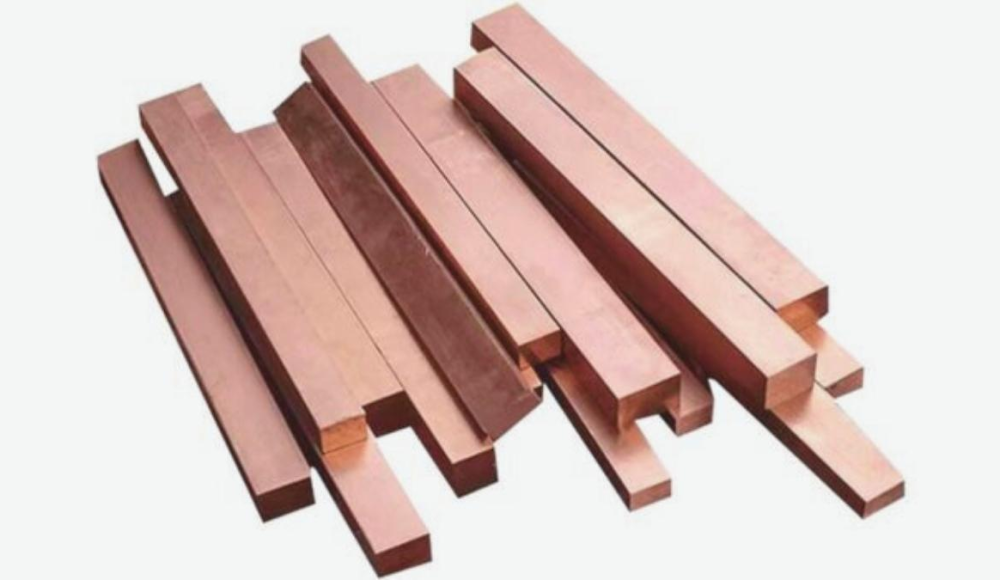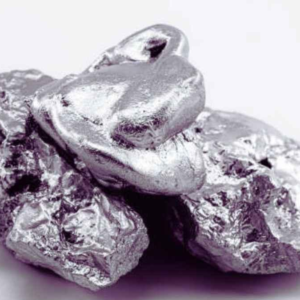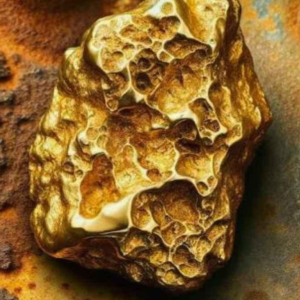¿Le resulta difícil entender cómo interactúa el cobre con su punto de fusión?? Si no tienes una concepción, puede enfrentar dificultades en operaciones como pelar, aleación, y aseguramiento de la calidad. El cobre es un metal importante., y el metalúrgico requiere un punto de fusión preciso para mejorar el procesamiento y la calidad del producto que desarrollan.. Haga un comienzo espléndido para mejorar sus conocimientos metalúrgicos leyendo esta extensa publicación de blog.!
¿Cuál es el punto de fusión del cobre??
Cobre normalmente tiene un punto de fusión de 1085 C o 1984 F. La alta temperatura de fusión del cobre lo hace apto para aplicaciones que incluyen cableado eléctrico., plomería, y maquinaria industrial. El conocimiento de su punto de fusión juega un papel fundamental para los metalúrgicos e ingenieros que desean procesar, elenco, y alear el cobre para conservar su fina conductividad eléctrica y resistencia..
Punto de fusion & Otras propiedades del cobre puro
Aquí tienes una tabla que resume las propiedades del cobre puro.:
| Propiedad | Valor |
| Punto de fusion | 1,984 °F (1,085 °C) |
| Densidad | 8.96 gramos/cm³ |
| Conductividad térmica | 401 W/m·K |
| Conductividad eléctrica | 58.0 × 10⁶ S/m |
| Color | Marrón rojizo |
| Usos comunes | Cableado eléctrico, plomería, utensilios de cocina, y maquinaria industrial |
Punto de fusión de las aleaciones de cobre
Aleaciones de cobre, en general, Tienen diferentes puntos de fusión dependiendo de los componentes presentes en los materiales.. Se producen añadiendo cobre con otros elementos para aumentar la resistencia y las características de corrosión.. Por ejemplo, latón que contiene zinc tendrá un punto de fusión más bajo en comparación con el cobre. Esta flexibilidad permite desarrollar usos específicos en sectores como la construcción y la automoción..
A continuación se muestran algunas aleaciones de cobre comunes y sus respectivos puntos de fusión.:
| Aleación de cobre | Composición de la aleación | Punto de fusion |
| Latón | Cobre y Zinc | 1,650-1,720 °F (900-940 °C) |
| Bronce | Cobre y Estaño | 1,740 °F (950 °C) |
| Cuproníquel | Cobre y Níquel | 2,150 °F (1,177 °C) |
| Bronce Aluminio | Cobre y Aluminio | 1,740-1,830 °F (950-1,000 °C) |
| Cobre berilio | Cobre y Berilio | 1,800 °F (982 °C) |
Presión atmosférica vs.. Temperatura de fusión del cobre
El punto de soldadura o la aleación de soldadura, como una barra de cobre, se puede variar en función de las influencias ambientales, como la presión atmosférica.. En la mayoría de los casos, La aplicación de presión aumenta el punto de fusión de los metales., de los cuales el cobre no es excepcional. El punto de fusión del cobre en 1 la presión atm es 1085 grados Celsius para cobre puro. Este punto se reduce en altitudes elevadas, por ejemplo en las cimas de montañas.. Sin embargo, El aumento de presión aumenta el calor necesario para fundir el cobre..
Los materiales extraños en el cobre generalmente provocan una disminución en la punto de fusión del metal. Particularmente, Estas impurezas también pueden causar un aumento en el punto de ebullición de una sustancia en particular.. Por supuesto, la presencia de impurezas como el oxígeno disminuye el punto de fusión de la fase líquida del cobre. Los elementos de aleación pueden ser impurezas que permiten mejorar algunas de las características útiles del material y al mismo tiempo reducir su punto de fusión..
Factores que influyen en el punto de fusión del cobre
La pureza del cobre también se puede verificar mediante tecnologías de medición como la espectroscopia., radiografía, PIC, EDX, y pruebas de conductividad.
Nivel de porosidad
El nivel de porosidad y el tamaño del grano determinan qué tan alta es la temperatura de fusión del cobre.. La tendencia de ebullición y fusión cambia en respuesta a la estructura del grano cuando se utiliza una aleación diferente.. Por ejemplo, El latón y el cobre tienen distintos grados de fusión., debido a estos cambios estructurales.
Relación Hall-Petch
La relación Hall-Petch dicta cómo el tamaño del grano afecta la resistencia de los metales.. También descubrieron que las estructuras de grano más pequeñas de los metales producen metales más fuertes y duros., pero temperaturas de fusión más bajas. Al comparar el mercurio y el cobre con el plomo, Se vería que el plomo tiene un tamaño de grano pequeño, lo que conduce a un punto de fusión bajo..
Impacto del tamaño del grano
El punto de fusión de la aleación de níquel y cobre es más alto que el del cobre., 1,455 °C porque el níquel tiene un tamaño de grano mayor. Las temperaturas de fusión también están determinadas por los límites de los granos, es decir, Regiones donde convergen dos granos.. El tamaño de grano reducido significa que los límites del material también son más débiles y tienen temperaturas de fusión más bajas.. Por otro lado, las estructuras de grano más grandes conducen a temperaturas de fusión. Por ejemplo, El cobre estañado tiene un punto de fusión de aproximadamente 1,900 °F debido al cambio en la estructura del grano.
Densidad de dislocación
Los puntos de fusión también están determinados por la densidad de dislocaciones.. Normalmente, un cristal con una pequeña densidad de dislocaciones se caracteriza por un alto punto de fusión. Eso significa que las partículas de cobre muy pequeñas se calientan más rápidamente que las grandes, como se observa en el comportamiento de fusión del alambre de cobre.. Algunos procesos de fabricación alteran el tamaño del grano., y los materiales de grano más fino se derretirán a un ritmo más rápido.
Energía superficial y estrés
Los cambios de energía superficial también afectan el punto de fusión del cobre.. El cobre puede derretirse cuando la energía térmica supera la energía superficial. La alta tensión sobre el cobre contrae la disposición atómica y, como resultado, reduce el punto de fusión del cobre.. La tensión acelera la deformación plástica y altera la temperatura de fusión..
Factores posteriores a la fabricación
Otros factores posteriores a la fabricación, como el endurecimiento y la recristalización, también pueden afectar los valores de los puntos de fusión.. Estos procesos pueden mejorar la orientación y densidad del cobre., aumentando también su resistencia a la temperatura.
Métodos para fundir cobre: Una descripción general
Estos son los métodos para fundir cobre junto con una breve descripción de sus principios de funcionamiento.:
- Fusión en horno: Utiliza el calor producido a una temperatura controlada del horno para fundir el cobre y luego le da la forma del "corazón"..
- Fusión por inducción: Utiliza inducción electromagnética para producir calor en la sustancia de cobre para fundirla..
- Antorchas de propano o gas natural: El calor de la llama directa de un soplete se utiliza para calentar piezas pequeñas y trozos de cobre para fundirlos..
- Calefacción por resistencia eléctrica: Introducir una corriente eléctrica a través del cobre de modo que la resistencia produzca calor eléctrico para fundir el metal..
- Horno de reverbero: Dirige el calor desde el techo del horno hacia el metal., para una fusión más fácil en una cámara más grande.
- Fusión al vacío: El proceso de vacío reduce la electrólisis y evita contaminaciones..
Comparación de los puntos de fusión de otros metales y el cobre
Aquí hay una comparación de los puntos de fusión del cobre con varios otros metales.:
| Metal | Punto de fusion (°C) | Punto de fusion (°F) |
| Cobre | 1,085 | 1,984 |
| Aluminio | 660 | 1,220 |
| Hierro | 1,538 | 2,800 |
| Oro | 1,064 | 1,947 |
| Plata | 961 | 1,763 |
| Zinc | 419 | 787 |
| Dirigir | 327 | 621 |
| Níquel | 1,455 | 2,651 |
| Titanio | 1,668 | 3,034 |
| Latón | 900 – 940 | 1,652 – 1,724 |
| Platino | 1,768 | 3,214 |
| Estaño | 232 | 450 |
| Tungsteno | 3,422 | 6,192 |
| Molibdeno | 2,623 | 4,753 |
| Bismuto | 271 | 520 |
| Cobalto | 1,495 | 2,723 |
| Mercurio | -39 | -38.2 |
| Cromo | 1,907 | 3,465 |
| Vanadio | 1,910 | 3,470 |
| Rodio | 1,964 | 3,567 |
Cómo derretir cobre? Pasos involucrados
Estos son los pasos básicos del proceso para fundir cobre.:
1. Reunir materiales
Reúna alambre de cobre o restos, o derretir alambre de cobre viejo, o chatarra de cobre, en un horno o crisol. Utilice elementos de seguridad (guantes, gafas de protección, delantal), mientras se derrite.
2. Configurar el horno
El tipo de horno de fusión a utilizar podrá ser de inducción, propano, o eléctrico dependiendo de la cantidad de cobre.
3. Prepara el cobre
Pulir la superficie de cobre para eliminar cualquier impureza.. Para facilitar la fusión, se puede cortar el cobre en rodajas más pequeñas para mayor facilidad..
4. Calentar el horno
Encienda el horno y ajuste la temperatura deseada.. La temperatura máxima debe ser de aproximadamente 1085 °C o 1984 °F para el cobre..
5. Cargue el cobre
Cuando el horno está caliente, Ponga lentamente el cobre en el crisol o crisol..
6. Monitorear el proceso de fusión
Controle el cobre y observe la temperatura.. Más, asegúrese de que no se sobrecaliente. Si es necesario, utilice un termómetro para comprobar la temperatura después de un tiempo..
7. Eliminar escoria
Cuando el cobre se funde, se forma espuma en la superficie. Esto se debe quitar periódicamente para eliminar impurezas o escoria..
8. Vierta el cobre fundido
Cuando todo el cobre esté licuado viértalo en un molde o fundición.. También es necesario tomar precauciones medioambientales para evitar accidentes que impliquen derrames o salpicaduras de productos químicos..
9. Enfriar el cobre
Deje que el cobre vertido se enfríe y se solidifique en los moldes antes de levantarlo..
10. Inspeccionar el producto final
Examinar el cobre solidificado para determinar su estándar y la calidad del material que brilla durante el proceso..
Resumen
La guía cubre una descripción general de las propiedades del cobre., que son cruciales para su uso en diferentes áreas. Debido a su alta conductividad térmica y eléctrica., se utiliza en cableado eléctrico, plomería, e industrias manufactureras. El conocimiento sobre el cobre ayuda a ingenieros y metalúrgicos a mejorar los métodos de fusión y mejorar las propiedades de los materiales para aumentar el rendimiento de los sistemas a base de cobre..
Usando estos conocimientos, Las industrias pueden mejorar su aplicación para aumentar la eficiencia y la confiabilidad del cobre para convertirse en un material crítico en la sociedad actual.. Tapas de precisión La empresa es un socio comprometido a ofrecer información útil y experiencia en metalurgia.. Comuníquese con nosotros hoy, y conocer, ¿Cómo podemos ayudarle con su proyecto de mecanizado de cobre?!




1 pensamiento en “Punto de fusión del cobre – Un estudio completo para metalúrgicos”